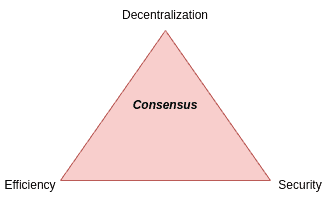1. 简介
在本文中,我们将探讨分布式系统中一个重要的概念 —— 共识(Consensus)。我们将介绍共识的基本含义、实现方式、主要算法类型,并结合实际应用场景分析其优缺点。
共识是分布式系统中确保多个节点达成一致状态的关键机制,尤其在区块链领域中扮演着核心角色。理解共识机制,有助于我们设计出更可靠、更安全的分布式系统。
2. 什么是共识(Consensus)?
共识(Consensus)最早由 Leslie Lamport 和 Barbara Liskov 在 20 世纪 70 年代提出。在分布式系统中,由于节点可能故障、网络可能延迟或丢包,如何让多个节点在某一状态上达成一致成为难题。
✅ 共识的本质是:多个节点就某一个值或状态达成一致的过程。
在计算机科学中,共识协议的目标是确保即使在部分节点失败或通信不可靠的情况下,系统仍然能够做出统一决策。它广泛应用于分布式数据库、服务协调、以及区块链等场景中。
3. 如何实现共识?
实现共识通常需要以下几个关键步骤:
- 问题定义明确:所有节点必须清楚当前要达成一致的问题或值。
- 节点间通信:节点之间通过消息交换信息,表达自己的意见或提议。
- 投票或协商机制:通过投票、提议/接受(Propose/Accept)等方式,达成多数或全体一致。
- 最终决策:一旦达成一致,所有节点都必须接受并执行该决策。
需要注意的是,共识并不意味着所有节点都满意,而是指大多数节点达成了统一意见。
4. 常见的共识算法类型
在区块链和分布式系统中,常见的共识算法主要包括以下三种:
4.1 工作量证明(Proof of Work, PoW)
PoW 是比特币采用的共识机制。其核心思想是:节点(矿工)通过计算复杂的哈希值来竞争记账权。
- ✅ 优点:安全性高,抗攻击性强。
- ❌ 缺点:能耗高,效率低,不适合大规模系统。
示例代码(简化):
public class ProofOfWork {
public String mine(int difficulty, String data) {
String nonce = "";
String hash = "";
int tries = 0;
while (!hash.startsWith("0".repeat(difficulty))) {
nonce = String.valueOf(tries++);
hash = SHA256(data + nonce);
}
return hash;
}
}
4.2 权益证明(Proof of Stake, PoS)
PoS 机制中,节点的记账权与其持有的代币数量成正比。持币越多、时间越长,越可能被选中打包区块。
- ✅ 优点:能耗低,效率高。
- ❌ 缺点:富者愈富,可能影响公平性。
4.3 委托权益证明(Delegated Proof of Stake, DPoS)
DPoS 是 PoS 的变种,节点通过投票选举出“代表节点”来负责打包和验证交易。
- ✅ 优点:高效、民主、适合大型网络。
- ❌ 缺点:中心化风险较高。
5. 共识算法的应用场景
共识算法在多个领域中都有广泛应用,尤其是在区块链系统中。以下是一些典型应用:
5.1 比特币(Bitcoin)
- 使用 PoW 算法。
- 每 10 分钟产生一个区块。
- 矿工通过算力竞争记账权,获得比特币奖励。
5.2 以太坊(Ethereum)
- 初期使用 PoW。
- 后期升级为 PoS(以太坊 2.0)。
- 通过质押 ETH 来参与区块验证。
5.3 卡达诺(Cardano)
- 使用 Ouroboros 算法(一种 PoS 变体)。
- 安全性和可扩展性并重。
5.4 EOS
- 使用 DPoS。
- 通过投票选出 21 个超级节点负责出块。
6. 共识算法的优缺点分析
6.1 优点
✅ 去中心化:无需信任单一节点,系统更安全。
✅ 安全性高:多数共识机制能抵御拜占庭攻击。
✅ 提高效率:如 PoS 和 DPoS 能显著提升交易处理速度。
如下图所示,共识算法在安全性、效率和去中心化之间取得平衡:

6.2 缺点
❌ 可扩展性差:随着节点数量增加,达成共识所需时间可能指数级增长。
❌ 资源消耗大:如 PoW 机制下能耗极高。
❌ 中心化风险:如 DPoS 中代表节点可能形成垄断。
7. 总结
共识机制是分布式系统和区块链网络的核心,它确保了系统的可靠性和安全性。
- 我们介绍了共识的基本概念、实现方式和主要算法类型(PoW、PoS、DPoS)。
- 分析了它们在实际应用中的优缺点。
- 探讨了其在比特币、以太坊等项目中的具体使用。
虽然共识机制在可扩展性方面仍存在挑战,但其在去中心化、安全性方面的优势使其成为构建现代分布式系统不可或缺的一部分。在实际项目中,应根据业务需求选择合适的共识算法,避免“踩坑”。